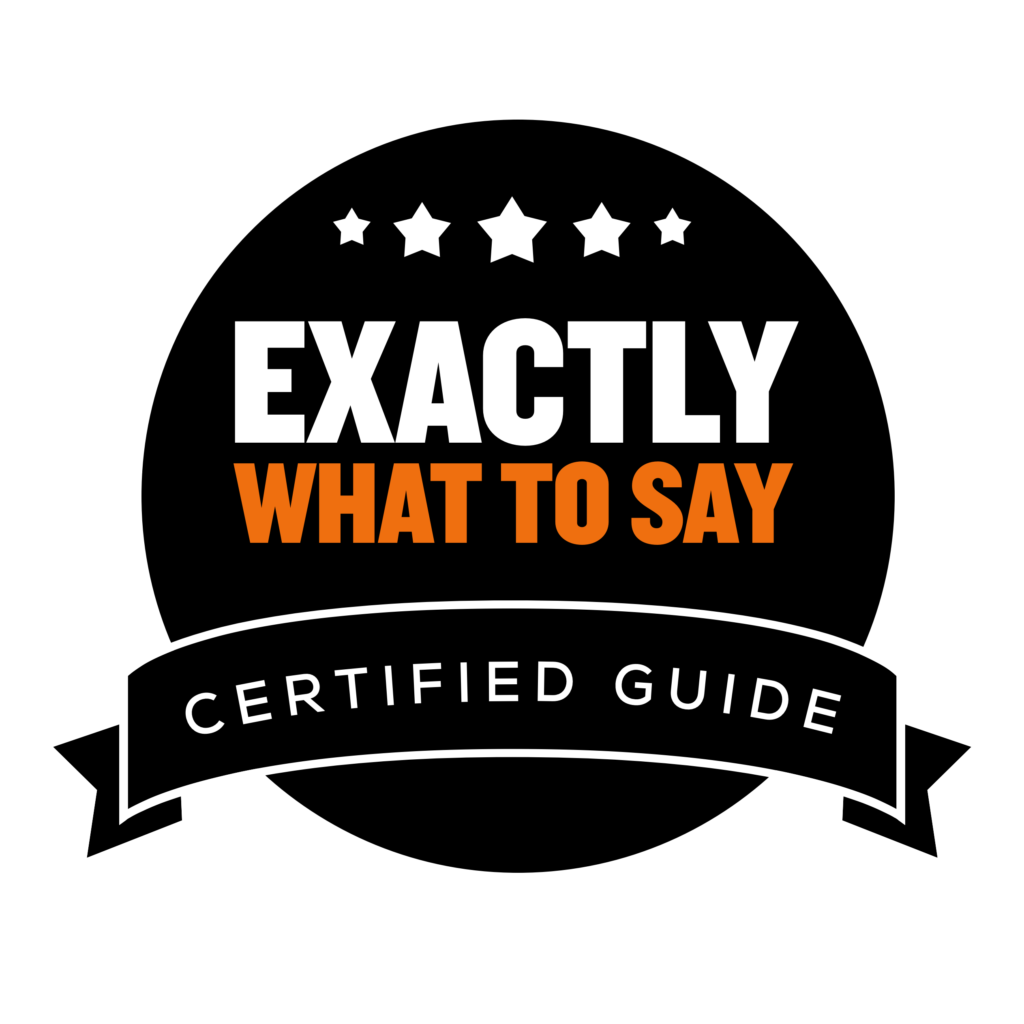Tanis Roeder is a communication expert, professional coach, and EWTS Guide. She works with corporate teams and leaders to improve speaking and communication skills. She recently hosted one of the EWTS Critical Conversations webinars, where she discussed practical ways to overcome the fear of public speaking.
Around 75% of people are scared of speaking in public, making it one of the most common fears that people can suffer from. Tanis is on a mission to help you overcome this fear so that it won’t stop you from delivering a great presentation, and this blog features some of the highlights from her webinar.
Fear
Almost everyone Tanis has ever worked with is afraid or has been afraid of speaking in public at one time in their life.
Have you ever referred to that nervous feeling as butterflies? Or does the fear you experience feel more like a swarm of moths?
If your fear is more like the latter, there are practical things you can do to make sure that you don’t get overwhelmed by it.
Imagine that you have a really important presentation coming up. It’s not your average presentation; it’s a proper ‘career-defining moment’, so the pressure is well and truly on.
What happens to your body before and during? Have you ever experienced any of the following?
- Shaking hands
- Pounding heart
- Shortness of breath
- A tight throat
- Your voice catching
- Mind going blank
- Red, blushing skin
- Sweating
- Dry mouth
- The sudden urge to go to the bathroom
These are all common, and they are all physiological reactions. They are ways that your body naturally reacts when dealing with a stressful situation.
When your body reacts strongly to stress, it can cause deep chemical reactions and increase your levels of cortisol. Cortisol is a hormone that increases in your body when you are feeling under pressure. It’s your natural “flight or fight” response that has kept humans alive for thousands of years.
When you are in a stressful situation, cortisol causes an increase in your heart rate and blood pressure, and as all of these things are happening, it can affect vital parts of your brain, like the part that deals with your memory.
This is what can cause your mind to go blank, and if your mind goes blank, the feeling of panic can increase.
Is there anything worse than standing in front of your audience with nothing to say?!
It can happen to even the most seasoned speaker, so don’t worry. You don’t have to be perfect. Tanis has never delivered a perfect presentation, and she doesn’t believe that anyone ever has.
There’s the presentation you prepare, the presentation you give, and the presentation that you wish you had given.
How To Keep Your Fear Response Under Control
There are some simple steps that you can take to overcome these physiological responses.
- Make a list of everything that could go wrong and the things you’re worried might go wrong.
- Score them according to the likelihood of them happening and number them from 1 - the most unlikely to 10 - the most likely. (Hopefully, they won’t all be 10s!)
- What will you do if they do happen? If you’ve planned in advance, you can remain calmer during your presentation.
This technique isn’t just great for a presentation. You can do this exercise for any situation when the nerves start rising.
Controlling Your Fear In 7 Steps
1
Breathe
In through the mouth and out through the mouth, or as Tanis’s grandma used to say, smell the roses, blow out the candles. By breathing deeply, you are giving your brain the oxygen it needs to function properly.
2
Memorize
Although Tanis doesn’t believe in memorizing the entire script, knowing the first 1 – 2 minutes cold could help you when you are at your most nervous.
3
Eat Something
Your brain needs fuel as much as it needs oxygen to function properly.
4
Visualise Success
Not just access for yourself. Visualize your audience leaning in and taking notes.
5
Sleep
Stop making those last-minute changes the night before. Your brain won’t remember them. Focus on getting a good night’s sleep instead.
6
Meet The Audience
If possible, meet as many audience members as possible. This will normalize them and make them far less scary and intimidating.
7
Say ‘So What?’
Your listeners are not going to care about the physiological responses your body might display due to nerves.
What Not To Say (& What To Replace It With)
(& What To Replace It With)
Your fear before an important presentation can be enhanced or decreased by what you say to yourself.
Create a Simple Swap to counterbalance every negative thing you think and make you feel more positive and less fearful.
Here are some common negative messages that you might tell yourself:
- I’m going to mess up or forget what to say
- They are going to judge me
- I’m not qualified to speak on this topic
- I will look foolish in front of everyone
- I’m just not a good public speaker
Here is Exactly What to Say instead:
- I am well-prepared
- I have valuable insights to share
- I am confident and capable
- My audience wants me to succeed
- I am in control of my nerves
Appearing Confident
So now that you’ve got a hold of the physiological responses, here are some of Tanis’s tips on how to appear confident.
Even the most accomplished speakers have moments where they wobble. The only difference is that they have had years of learning how to mask it and move on.
Sometimes, faking it can help you feel a lot better!
Eye Contact
You’ve started your presentation. Now you need to ensure that you’re making good, solid eye contact. It builds rapport, and rapport leads to likeability. If you’re scanning over the audience and not making strong eye contact, people can’t connect with you.
Tanis teaches the power of SPOC:
Single
Person
One
Connection
Eye contact can help you build a connection with your audience, so you should be mindful of SPOC as you’re looking out into your audience.
How long should you hold eye contact? The truth is that there is no set time. It’s probably going to fluctuate with every presentation, and it often depends on what you’re saying and what point you’re trying to put across, but you will get a feel for it the longer that you practice this.
Eye contact doesn’t just help with rapport; it can help you to control the pace of your voice, too, so make sure that you stay with each person longer, and your pace will naturally follow.
Think About Your Stance
People naturally tend to stand feet together, but this stance can make you appear smaller, and it also puts pressure on your back.
When you’re speaking and standing still, make sure to stand hip-width apart to give you a strong base, and remember – don’t lock your knees!
Working to have no movement from the waist down is one of the most powerful places you can be as a speaker. If you sway or move around, you can appear nervous.
Mind Your Hands
Have you ever been talking at an event and started to panic, thinking about what you should be doing with your hands?
You’re not alone!
Knowing what to do with your hands is hard and a really common worry that most people have. It’s worth bearing in mind that there’s no set rule of exactly what you should do with your hands, but there are some definite no-nos, such as putting your hands behind your back.
The palms of your hands are very powerful; if you’re hiding them, you can appear nervous or that you’re hiding something.
Stop touching yourself; it makes you look more nervous. Use palm-out gestures whilst getting your elbows away from your body. Your gestures should stay between your waist and your chin.
Remember that 92% of gestures tend to be emphatic. The more you practice, the more naturally they will occur during your presentation.
Vocal Power
The main areas that you need to be aware of when speaking in public are:
- Power
- Pace
- Punch
- Pitch
- Pause
Typically, your voice should get louder when on stage. Don’t assume that the microphone will do the work for you.
Think of your power range as 1-10, 1 being the softest and 10 the loudest. The recommended number to hit is 7.
When it comes to pace, you should mix it up, and it’s here that you can get the punch and the pitch involved, too.
If you’re someone who struggles with filler words, Tanis recommends getting someone to point them out to you every time you use them. This is the only way to successfully train it out of you. Filler words will prevent you from pausing in the right places and can become annoying (think of all those unnecessary ‘like’s’ some people use!)
A top tip is to consciously develop 3 different speeds of speech.
If you speak fast, insert a medium and slow. If you speak slowly, insert a medium and fast. Whatever you do, remember that a great speech rarely goes slow, medium, fast, slow medium, fast. You need to mix it up and jump around with consciousness.
By putting into practice all of these things, speaking in public won’t feel so overwhelming. These best practices will not eliminate your fear completely, but they will help you rationalize and work through your fear so it doesn’t take over.
This blog was part of a series of EWTS Critical Conversations Webinars, and if you want to experience the full webinar experience, you should sign up to hear what is coming up in the series.











